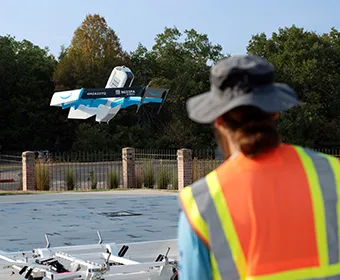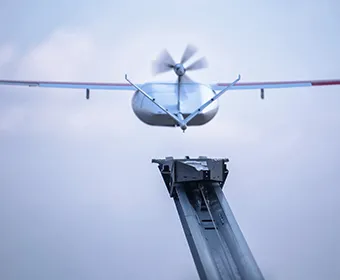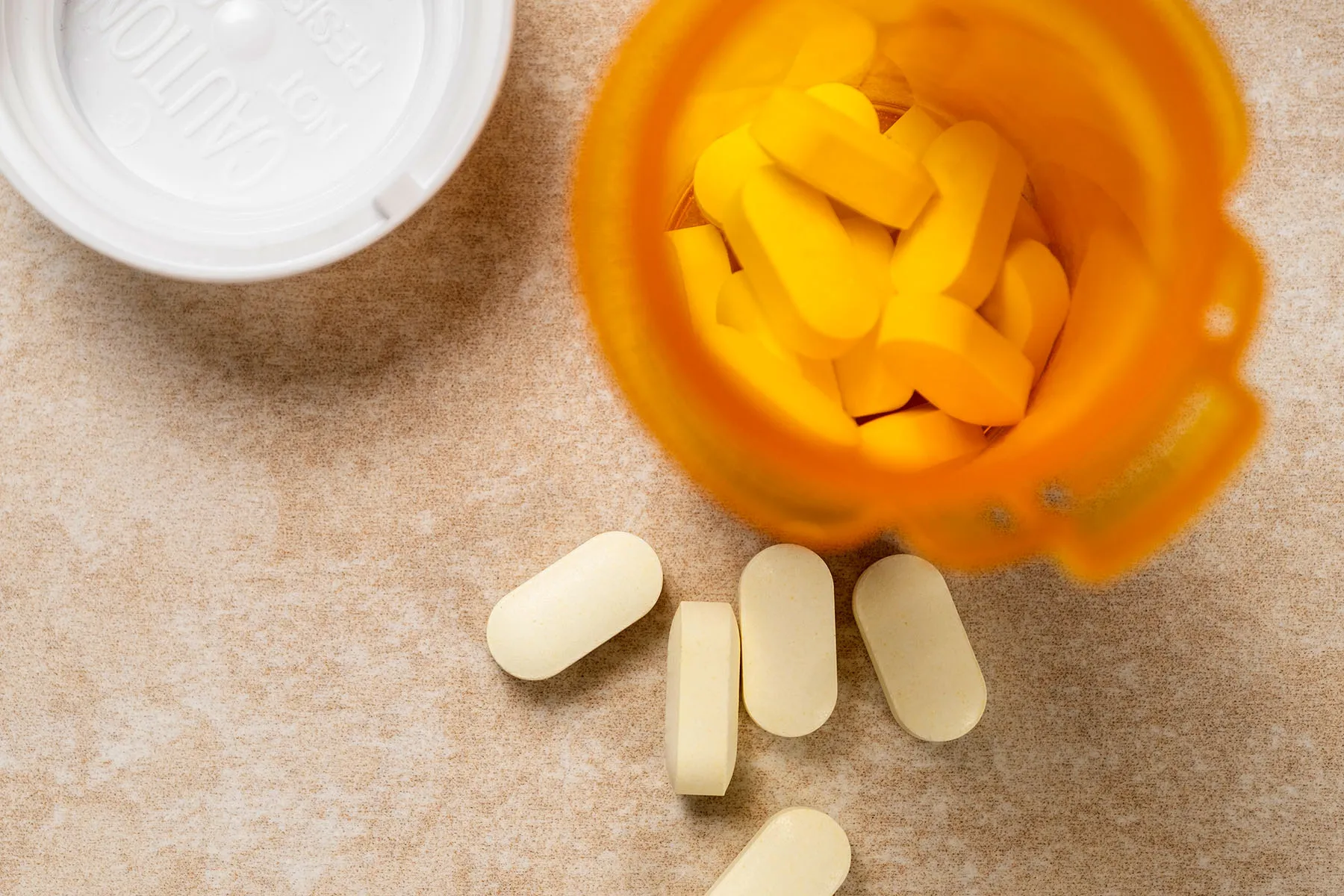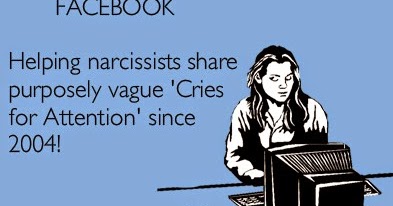Dec. 21, 2023 — In 2013, Amazon CEO Jeff Bezos went on 60 Minutes to make a bold announcement: In 5 years, Amazon customers would be getting deliveries by drones. People could receive just about any item they wanted in only 30 minutes.
A decade later, drones haven’t exactly become ubiquitous. As one headline teased, the company’s drone delivery service, Prime Air, in its first few weeks “delivered to fewer houses than there are words in this headline.” As 2023 progressed, the outlook didn’t seem to improve. Last month, The New York Times called the venture “underwhelming.”
But there’s considerably more enthusiasm for drones when it comes to health care. “Drone delivery is here, just not where people expect it to be,” said Hillary Brendzel, head of U.S. health care practice for Zipline, a San Francisco-based drone delivery company. Instead of groceries or batteries, the future of drones may very well be in medicine.
In late October, Cleveland Clinic announced a partnership with Zipline, with plans to begin drone prescription delivery in more than a dozen locations across Ohio by 2025. Other hospitals – such as Upstate Medical University in Syracuse, NY, and Intermountain Healthcare in Salt Lake City, UT – have announced similar programs.
The technology, which is still being tested, could soon become the norm, said Don Carroll, associate chief of pharmacy at Cleveland Clinic. “We want to be able to help our patients get in front of their health issues by having timely access to all of their medications.” The drones could also ferry lab samples, medical supplies, and items for hospital-at-home services.
It’s not just about convenience. Moving lab samples between facilities “in minutes and at a moment’s notice, instead of the hours it currently takes” means that patients will get “diagnosed and treated faster, leading to better health outcomes,” said Brendzel.
Pharmacies are experimenting with drone delivery too, including Walgreens, CVS Health, Walmart, and most recently, Amazon. At no extra charge, Amazon Pharmacy customers in College Station, TX, can get their medications — including treatments for everything from the flu and pneumonia to asthma and blood pressure meds — delivered to their doorstep in less than an hour.
Other companies are exploring drones for emergency response, a faster way to deliver defibrillators and other medical supplies to people who urgently need them.
“Leading U.S. health systems see the benefits,” said Brendzel — not just for prescriptions but in all aspects of health care, including medical and emergency supplies. “They’re now investing in drone delivery, which means that instant, autonomous delivery is about to move from sci-fi to routine for patients across the country.”
History and Advances
The use of drones in health care is not new. During the pandemic, drones were used for everything from health monitoring to delivering COVID tests. Zipline has been using drones to deliver blood, vaccines, and other medical supplies in the East African country of Rwanda since 2016, and according to data collected from Rwandan public hospitals, it’s directly resulted in an 51% reduction in maternal deaths due to postpartum hemorrhage.
But safety concerns have lingered. Amazon drones reportedly crashed at least eight times between 2021 and 2022, including one incident which caused a 20-acre brush fire in Oregon. And last year, a delivery drone hit power lines in Queensland, Australia, knocking out power for about 2,000 homes.
But drone technology has come a long way, even in the past couple of years. Just consider this clip of more than 30 “Zips” — the pet name for Zipline’s platform 2 drones — from late November, seamlessly sharing the skies at one of the company’s test sites, without so much as a single near miss.
Both Zipline and Amazon introduced next-generation drones this year that aren’t just more maneuverable, able to avoid collisions in densely populated areas, but also quieter than ever. In a March video from Science YouTuber Mark Rober that quickly went viral — 29 million views to date — he called the Zip droid “whisper quiet” and noticed that cows mooing nearby were actually louder.
Zips are also capable of making a 10-mile delivery in just 10 minutes, to precise locations like a front porch or backyard patio table, lowering a “delivery droid” (about the size of a toaster) with a tether wire from the Zip as it hovers around 300 feet above ground. To avoid packages left unattended, customers must be home to receive their deliveries, which can be tracked on their phone and scheduled for precise times.

Improving Access to Medicine
All this may sound like something out of The Jetsons, but unlike floating treadmills and cars that fold into briefcases, health care drones are a more practical and even necessary tech innovation.
“Pharmacy deserts are now a real phenomenon,” said Carroll, referring to widespread drugstore closures in recent years that have left many Americans without easy access to a pharmacy. More than 40% of U.S. counties are pharmacy deserts, GoodRx research shows, and Black and Hispanic/Latino neighborhoods may be disproportionately affected. “Not everyone has convenient access to a pharmacy anymore.”
Even those with pharmacies nearby aren’t always able to get there, whether it’s issues with transportation or not being able to get off work during pharmacy hours.
“The patient journey from diagnosis to medication is one that we don’t do well in traditional health care,” said Vin Gupta, MD, chief medical officer of Amazon Pharmacy. “I’ve seen firsthand the end consequence of people not presenting to care. There’ve been multiple incidences of patients of mine who are high risk for, say, the flu, and despite our best efforts, it took a week or longer between when they started feeling ill to them getting medication.”
But drone deliveries could enable more patients “to stay out of the ER, and hopefully out of the ICU,” Gupta said.
Speeding Up Emergency Response
As some companies are already exploring, drones could play a vital role in emergency response. In the summer of 2020, researchers at the Karolinska Institute in Sweden tested the efficiency of using drones to quickly dispatch automated external defibrillators (AEDs) in parallel with ambulances in cities like Gothenburg and Kungälv. During the 4-month study, they found that in emergencies involving cardiac arrest, defibrillators arrived before an ambulance 64% of the time, with a median time benefit of one minute and 52 seconds.

“We can deliver AEDs in summer and winter, in daylight and in darkness,” said lead researcher Andreas Claesson, PhD, an associate professor at the university’s Center for Resuscitation Science. “When deployed, we arrive before emergency medical services with a very good time benefit.”
Defibrillators are just the tip of the iceberg. Anything in the same general weight class of an AED (up to 1.5 kg, or about 3 pounds) could feasibly be delivered by drone. “Like naloxone nasal dispensers for opioid-intoxication,” said Claesson. “Or trauma dressings or tourniquets for uncontrolled bleeding from shootings, stabbings, or other terror attacks.” If medical equipment is needed fast, faster than what an ambulance on four wheels can get there, a drone could mean the difference between life and death.
Defibrillator drone delivery might be arriving on U.S. shores soon, thanks to the Atlanta-based company Skyfire Consulting. Founded in 2014 to help police, firefighters, and other first responders use drone technology in their daily operations, Skyfire has focused on decreasing the wait time between the first signs of cardiac arrest and life-saving measures.
“Historically, defibrillators have been very heavy and cumbersome, both things that make it tough to fly them on drones,” said Skyfire’s CEO and founder Matt Sloane. But in recent months, they’ve been running test flights in Buford, GA, and Huntsville, AL, with Avive defibrillators, “one of the smallest and most technologically advanced AEDs on the planet,” said Sloane.
“Once a person goes into cardiac arrest, you have about 5 minutes to start lifesaving treatment, or that person’s chances of survival go down considerably,” he said. But with drones, deaths from heart attacks could decrease dramatically, especially in rural communities where it could take up to 15 minutes for an ambulance to arrive.
“We’re working closely with local hospitals, fire, and emergency services agencies to come up with the best places to employ this technology and the best way to deploy these aircraft to get to a patient’s side most quickly,” said Sloane.
Flying Into the Future
Exciting as the innovations might be, none of it will happen overnight. Cleveland Clinic will spend much of 2024 coordinating with local government officials to make sure they’re in compliance with safety and technical requirements, and installing Zipline docks and loading portals across northeast Ohio. “We’ll start with a smaller number of deliveries in 2025 and plan to expand that number as time goes on,” said Carroll.

Just as important, he said, is “educating our patients on how drone deliveries work.” It may end up being the biggest challenge of all. In much the same way that the public was slow to embrace ATMs over human bank cashiers, Americans may need some convincing to skip the annoying (but familiar) line at the pharmacy in favor of droid delivery.
But Keller Rinaudo Cliffton, the CEO and cofounder of Zipline, isn’t just hopeful but wildly optimistic. “Over the next 10 years, a new global logistics network” — which includes but isn’t limited to Zipline — “is going to be built,” he said. “It is going to be automated, zero emission, and ten times faster than today.”
It’ll be “bigger than UPS and FedEx combined,” Cliffton said, “and will have a tremendously important impact on humanity by providing universal access to health care.”


